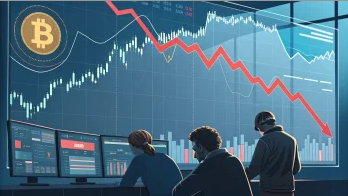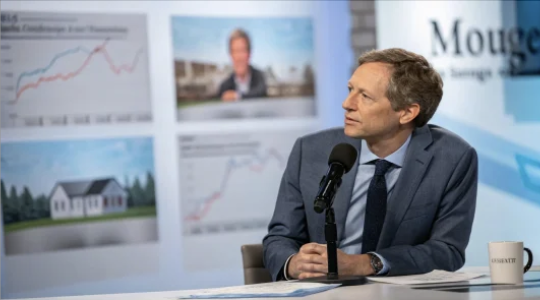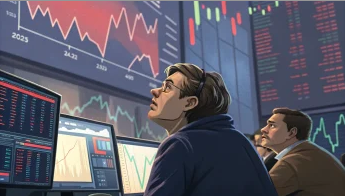The stock market can often seem like a fickle entity, fluctuating wildly and at times appearing to react for no apparent reason. However, several underlying factors can contribute to significant shifts in the market, and understanding these factors can help investors navigate the often-complicated world of finance. In this article, we will discuss four significant factors currently impacting the stock market, known as the four S’s: Shutdowns, Strikes, Student Debt, and Stagflation.
The fourth and most significant factor, stagflation, will receive special attention, as its impact on the economy has profound consequences for investors and the financial landscape as a whole.
See Also: 101 Ways to Make You an Extra $500 Fast
View this post on Instagram
A post shared by Taylor Sohns- CFP®, CIMA®, MBA- Finance (@lifegoalinvestments)
Table of Contents
ToggleShutdowns
As the first of the four S’s, government shutdowns have the potential to impact the economy significantly. This is particularly true for the United States, where a government shutdown will likely occur on October 1st. During a shutdown, the government drastically reduces its spending on discretionary programs, meaning funding for key areas such as education, health, and defense may be limited or completely cut off. This amounts to a staggering $1.6 trillion in the budget, presenting a sizable negative curveball for the economy.
The effects of a government shutdown can be widespread, impacting not only the financial stability of the country but also the daily lives of millions of citizens. For instance, furloughed federal employees may be forced to go without pay or work reduced hours, leading to a loss of income and increased financial stress. Additionally, essential services like national defense, air traffic control, and others may operate at less-than-ideal capacity, potentially causing ripple effects throughout the country. In turn, this uncertainty can decrease investor confidence, causing the stock market to suffer.
Strikes
The second factor contributing to stock market turmoil is strikes, such as the ongoing UAW (United Automobile Workers) strike. When strikes occur, they not only result in lower output, with fewer manufactured and sold products, but they also oftentimes lead to fear of continued wage pressures that can reignite inflation. In the case of the UAW strike, production of automobiles has taken a hit, and the potential for prolonged wage negotiations could further damage the industry and its contribution to the economy.
Strikes can also indirectly impact the stock market, as they often lead to uncertainty regarding future business conditions and potential disruptions to supply chains. This uncertainty can easily exacerbate anxieties and destabilize the stock market in the current economic climate.
Student Debt
The third factor affecting the stock market is the looming issue of student debt. Starting next week, student loan payments will be reinstated, with a reported 45 million Americans owing an average of $503 monthly. This means that over $22 billion will be removed from the national economy monthly, as these funds are redirected towards repaying student loans.
The weight of student loan debt not only the individual borrowers but also the economy as a whole. With millions of people directing their resources toward paying off debt, consumer spending will likely decrease, stymieing overall economic growth. This, in turn, can lead to stagnant stock prices and decreased investor confidence.
Stagflation – The Most Significant of the Four S’s
Of the four S’s, stagflation poses the greatest threat to the stock market and the economy as a whole. Stagflation is defined as a period of stagnant economic growth, high inflation, and high unemployment rates. These factors can create a vicious cycle, leaving policymakers and the Federal Reserve trapped between the dueling priorities of containing inflation and stimulating growth.
The primary concern with stagflation is that higher inflation rates necessitate an increase in interest rates by the Federal Reserve. The Fed aims to slow down the economy by raising interest rates to combat rising prices. However, this strategy can also lead to higher unemployment rates, as businesses may be less inclined to hire new workers or invest in expansion when borrowing funds becomes more expensive.
In response to concerns about stagflation, stock market investors may become more cautious, leading to reduced investment in equities. This caution, combined with the potential economic slowdown caused by higher interest rates, can create a challenging environment for growth in the stock market. Consequently, a climate of stagflation can wreak havoc on the stock market and stall economic progress.
Conclusion
The four S’s – Shutdowns, Strikes, Student Debt, and Stagflation – are all interconnected factors contributing to the current state of the stock market and the broader economy. Understanding and navigating these issues can be challenging; however, staying informed about these factors enables investors to make better-informed decisions.
Keeping a close eye on market and economic updates can help investors stay ahead of the curve and position themselves for success in an ever-changing financial landscape
Frequently Asked Questions (FAQ)
Q1: What are the four S’s impacting the stock market?
The four S’s are Shutdowns, Strikes, Student Debt, and Stagflation. These factors can significantly influence the stock market’s performance and have broader economic implications.
Q2: How do government shutdowns affect the economy and the stock market?
During government shutdowns, discretionary spending is reduced, affecting key areas like education, health, and defense. This can lead to financial instability, decreased investor confidence, and potential economic ripple effects.
Q3: What is the impact of strikes on the stock market?
Strikes, such as the UAW strike, can result in lower production, fears of wage pressures, and supply chain disruptions. These factors contribute to stock market uncertainty and can exacerbate existing economic anxieties.
Q4: How does student debt affect the stock market and the economy?
The reinstatement of student loan payments redirects billions of dollars away from consumer spending, which can hinder economic growth, lead to stagnant stock prices, and decrease investor confidence.
Q5: Why is stagflation considered the most significant factor among the four S’s?
Stagflation combines stagnant economic growth, high inflation, and high unemployment rates, creating a challenging environment. Higher inflation often prompts the Federal Reserve to raise interest rates, potentially reducing business expansion and leading to cautious stock market investment.
Q6: How can investors navigate these factors to make informed decisions?
Staying informed about economic and market updates is crucial. Monitoring developments related to the four S’s and their potential impacts can help investors make better-informed decisions and adapt to the evolving financial landscape.
Featured Image Credit: Photo by m. on Unsplash

















